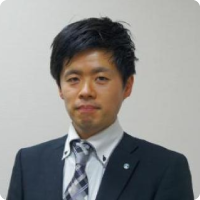- Notice
Making the most of research presentations to encourage competition and learning
2013.11.12
Jyosho Keiko Gakuen Junior & Senior High School Satoshi Seto, Teacher
On the day of the Science Castle in KANSAI on December 23 last year, two students from Jyosho Keiko Gakuen High School gave an impressive oral presentation of the results of their activities. However, this presentation was not the work of just the two students in front of the audience. We interviewed Mr. Seto, who uses the period of time leading up to the presentation to provide more effective guidance.

Aiming for the oral presentation stage
Last January, at a university science symposium, the students gave a poster presentation of their research results from the year before last. The oral presentations by high school students from other schools at the symposium inspired some of the students to give oral presentations using slides, rather than just posters. There was also a feeling that having the students experience the series of research steps of investigating, summarizing, and presenting would help foster scientific curiosity and presentation skills. Therefore, he was looking for a place to present the results of his research on "The Effect of Detergents on Sea Urchin Fertilization," which he had worked on in an SPP course this summer. At that time, I received an invitation to participate in Science Castle, a place for junior high and high school students to present their research.
Compete and collaborate in on-campus competitions
However, not all 15 students who worked on the research were able to give oral presentations. Therefore, we decided to divide them into three groups and hold an on-campus competition. Each group spent one month writing up their research in the form of a paper and the next month preparing slides for their presentations, and the competition was held in early December. Although the presentations were on the same topic, each group showed individuality, with different discussions and conclusions, and explanations of experimental methods that were easy to understand using pictures of beakers and animations. The students themselves and the science teachers evaluated the presentations based on whether they were interesting or not, and whether they were easy to understand. Although there were differences in the items rated highly by each group, the overall evaluation was similar for all groups. The students who did not give an oral presentation on the day of the presentation were asked to give a presentation on their own, and the students who did not give an oral presentation on the day of the presentation were asked to give a presentation on their own. On the day of the presentation, students who did not give oral presentations were assigned to present posters so that everyone could present.
Cultivate multiple perspectives and the ability to make decisions
In the process of working in groups to summarize the results of their research, discussions inevitably occur among the groups. By working on the same theme, the teacher recalls that the students were able to learn how to communicate more clearly to others. I feel that the children need to be able to listen to other people's opinions, to see things from multiple perspectives, and to make decisions about how to incorporate various opinions. This experience may have been a small step, but it will surely help them in their future growth.
Jyosho Keiko Gakuen Junior and Senior High School presented at Science Castle 2012.
Article in the March 2013 issue of Kyoiku Ouen, a science education information magazine
Affiliations are current at the time of publication in Education Support.
